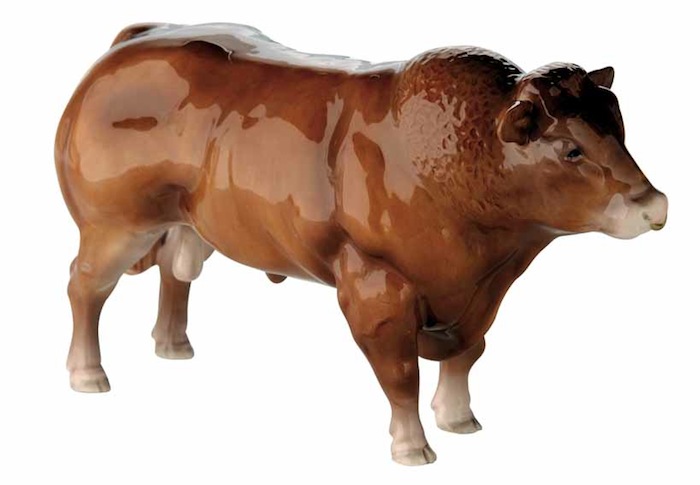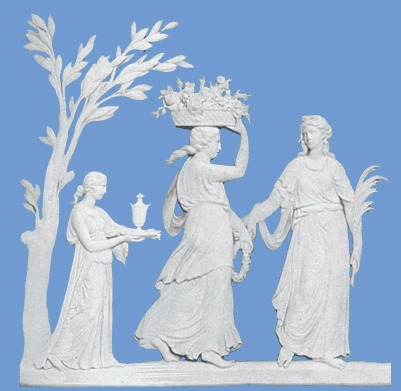The 19th century saw the development of new techniques in ceramics, as well as the development of bone china, which brought relatively cheap porcelain to the masses. But at the other end of the market, there are many lavish and much more expensive pieces to collect.
Various exciting new porcelain-making techniques were introduced and perfected in the 19th century. The development of bone china, which was made from the same ingredients as hard-paste porcelain with large quantities of animal bone added, meant that less expensive porcelain became widely available. Practical, relatively inexpensive dinner, dessert and tea services were made in large quantities, many of them embellished with printed decoration, which was also developed at this time.
You can still buy simple transfer-printed flat wares and hollow wares quite inexpensively. Some of the most affordable collectables are those made by the Goss factory during the second half of the 19th century. Statuettes and ornaments with printed decoration made by this factory are available for less than £50.
At the other end of the spectrum, important factories such as Rockingham, Spode and Minton made a variety of highly ornamental wares, often using lavish gilding, elaborate, high-relief floral decorations and new techniques such as pâte-sur-pâte. Value is usually a matter of decorative appeal. Expect to pay more for hand-painted decoration. Any elaborately decorated piece will usually command a premium.
Printed china
Although hand-painted wares are usually more desirable than those with transfer-printed decoration, there are some exceptions. The teapot at the top of the page shows Queen Victoria and Prince Albert; a royal subject always pushes up the price and this would be worth £600 to £800.
Spode

Spode was one of the first factories to use bone china. You can recognise earlier (pre-1830) pieces by their mark, which was usually hand painted – later it was printed. Features typical of Spode porcelain are:
- pattern number in red
- very thin potting
- thin, smooth, white glaze
Parian

Although this elegant figure looks as though it’s carved from marble, it’s actually made from parian, a type of porcelain. Parian figures became popular in the mid-19th century; the best were made (and marked) by factories such as Worcester (as this one is), Copeland, Belleek or Wedgwood, and are well detailed. Unmarked figures are much less valuable.
Coalport

French designs of the 18th century became popular again in the 19th century. One of the most famous factories to make porcelain in the style of Sèvres was Coalport, which also copied the styles of Dresden and Meissen.
This vase is particularly desirable because of its high-quality hand-painted birds.
NB: Coalport is often marked AD1750. This is the date the company was founded, not the date of production.
Minton

One of the most sophisticated innovations introduced by Minton during the 19th century was the technique of pâte-sur-pâte. This laborious process involved applying many layers of white slip (a mixture of clay and water) to a dark body, then hand-carving it to expose the dark ground. The pieces were often decorated with lavish gilding and are always expensive.
Rockingham

You may think this is a strange teapot, but in fact it’s a violeteer – a pot to hold petals and herbs. The highly elaborate moulded and flower-encrusted decoration is typical of this factory.
Beware
Don’t confuse hand-painting, which increases value, with hand-enamelled print, which is generally less desirable. If it’s hand-enamelled you’ll probably be able to see the transfer print under the enamel.
Dating 19th- and 20th-century porcelain
The following wording on porcelain can help you to narrow down the date of its manufacture.
- Royal in trademark – after 1850
- Limited or Ltd after name – after 1860
- Trade Mark – after c.1870
- England in trademark – after 1890
- Bone China – 20th century
- Made in England – 20th century



![William Baddeley [I]](https://gaukantiques.com/wp-content/uploads/2013/03/basalt_pottery.jpg)







